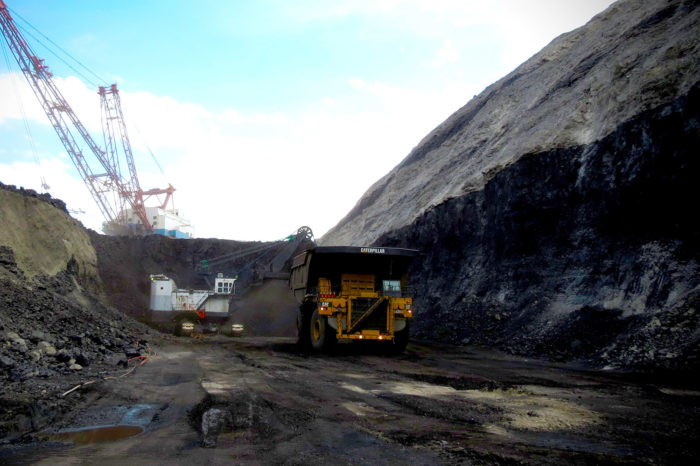The Global Energy Debate Must Mature

By Michelle Manook, World Coal Association
Coal’s Key Role in over 80 Countries
Although popular sentiment and media coverage would suggest that coal is not needed and no longer relevant, 40 nations that have not previously used coal for power have added it to their energy portfolios since 2010, including countries in the Middle East and Africa. The fact is often overlooked that coal is still forecast to be the single biggest source of electricity in 2040 and will remain vital to global steel production.
When economies and societies across the globe were hit by COVID-19 last year, many countries identified coal as essential, stating that it would be critical to their economies during the pandemic and vital to their recovery. The continued importance of coal to developed and developing countries soon became clear.
Coal plays a critical role in the energy mix of around 80 countries across the globe, through its role in powering essential services and industry and in producing the building blocks of our societies, such as steel and cement.
Dismissing Coal is Dismissing the Rights of Nations
At the G20 Energy Ministers Meeting last year, ministers emphatically affirmed that a variety of technologies and fuels would be required for global energy security and to overcome the effects of COVID-19 and support economic recovery.
It is vital that the global energy debate matures. Only then is there realistically a chance to meet both economic and environmental goals. Countries across the world will need support in choosing their own energy mix. This includes the choice to use coal and to adopt and fund clean coal technologies. These choices will help to establish affordable, reliable and sustainable energy systems which underpin growth.
Addressing Misconceptions about Renewables
Of continued concern is the suggestion that coal can easily be replaced by renewables. This is a naïve proposition that has been increasingly accepted in some quarters. Coal, for many nations, is an integral element of the baseload capacity that forms the foundation for a reliable grid. Further, it supports intermittent renewable energy sources, providing electricity when the wind doesn’t blow and the sun doesn’t shine. Coal generation can exist without renewables, yet renewables alone cannot deliver the dispatchable energy provided by a baseload like coal.
While some contend that batteries are a fix to the intermittency and reliability issues, this position fails to appropriately recognize the role of battery storage in the electricity system. A recent study found the primary use for three-quarters of global battery use was for functions such as frequency regulation. As an indication of the renewable storage challenge to provide 24/7 power, Tesla, the world’s most advanced battery, can only store 1/40th of the energy that can be stored by coal.
Multiple sources, including the International Energy Agency (IEA), the Intergovernmental Panel on Climate Change (IPCC) and the U.S. Energy Information Administration (EIA), have concluded that there isn’t a credible scenario which includes 100 percent renewables.
Beyond technical barriers, a transition to a 100 percent renewable supply of electricity, where large reliable baseload is required, is a costly scenario. A recent Californian study of the cost of transitioning to 100 percent renewable energy found that it would increase electricity costs to $213 per MWh. This is $160/MWh higher than the 2018 average price of $53/MWh, a staggering 300 percent more expensive. In California, where electricity rates are already higher than most other parts of the U.S., this cost increase is of even greater concern considering the electricity shortages last summer. The large uptake in renewable electricity in California and less resource diversity are affecting reliability. High electricity prices cause knock-on effects to households and to energy-intensive industries which rely on affordable and dependable supply.
Globally, a balanced approach with a diverse mix of fuels and resources is needed. India and China, the largest markets for coal consumption, are key examples of countries including coal and renewables in their energy mix. These countries are not focusing on any one resource, but rather prioritizing affordable, dependable and secure energy.
In 2020, 17 new coal-fired power stations were completed, amounting to 12.2 GW across China, India, Bangladesh, Czech Republic, Germany and the Dominican Republic. The most efficient coal plants today are more than 10 percent more efficient than the global average, substantially reducing the release of carbon dioxide and particulates.
Asia is Developing Robust, Reliable and Diverse Fuel Systems
The World Coal Association’s work and relationship with South and Southeast Asia reflect the reality that the fast-growing economies in Asia are being driven by coal’s abundance, affordability and dependability. Currently, 60 units are under construction and scheduled to come online in 2021 with 35.5 GW of capacity, including three units in Japan and 15 in China. These countries are not transitioning away from coal, despite the headlines. Instead, they are developing robust, reliable and affordable fuel systems and reducing the emissions profile of coal through wider deployment of clean coal technologies.
Countries across Asia are making strides with high efficiency, low emissions (HELE) technologies to bridge the gap towards zero emissions from coal, but this can only be achieved with cooperation, funding and flexibility. Supercritical and ultra-supercritical technology allows emerging economies to combine their energy access and development priorities with global climate ambitions. There are promising developments in Southeast Asia, with several ultra-supercritical units recently coming online or under construction, including Cirebon-2 in Indonesia, Manjung 5 Power Plant in Malaysia and the Vinh Tan 4 extension in Vietnam. Cirebon-2 achieves a high thermal efficiency of 45 percent, which is close to the current industry maximum, reinforcing the progress being made in the region.
45Q Tax Credit is a Key Example of Necessary Policies
However, countries are developing at different speeds and policies will need to be inclusive and understanding of this. The 45Q tax credit initiative for CCUS was signed into U.S. law in 2018, and more detailed guidance issued in 2020. The United States is a global leader in this space, and this is a key example of necessary policy initiatives which have enabled the involvement of the U.S. in 12 of the 17 new CCUS facilities.
The real focus now needs to be on financing and investment policies that agnostically complement government frameworks (not replace them), to accelerate the deployment of clean coal technologies which will facilitate sustainable energy systems that support economies and growth.
Economies relying on coal will need to make a concerted effort to engage and educate the finance and investment community about this. Clear national policy roadmaps will be necessary to underpin this to address ESG objectives.
Carbon Capture, Use and Storage Technologies are a Necessity
In the U.S., President Joe Biden has pledged to scale up federal investments and enhance tax incentives for CCUS. Through membership with international clean energy initiatives, such as the Clean Energy Ministerial and Mission Innovation, the U.S. can be seen as a world leader.
This is positive given that both the IEA and the IPCC state that to limit global warming, there would be a need to increase the amount of carbon that is currently captured and stored to between 10 percent and 20 percent of the approximately 30 billion metric tons of carbon produced annually. Further, according to the IEA, “reaching net zero will be virtually impossible without CCUS”.
Development and deployment of clean coal technologies in the U.S. is critical on a global stage. The recent extension of the 45Q project deadline by Congress is helpful. Momentum created by U.S. investment will rapidly push technology along the learning curve. This will lead to declining costs and new business models that improve the financial viability of CCUS and incentivize infrastructure development around the world through CCUS “hub and cluster” opportunities.
The Future of Coal Relies on Collaboration and Innovation
Surprisingly, the facts get missed that many countries have identified a role for clean coal technologies and innovation, both within their Paris Agreement pledges and their own policies. In 2020, China and Japan enhanced the level of these ambitions by committing to net-zero targets, but this doesn’t mean transitioning away from coal. Instead, these coal-based economies are transforming to create diverse, affordable and resilient fuel systems, reducing the emissions profile of coal in the long term through the wider deployment of clean coal technologies.
Technologies have disrupted and transformed industries for centuries and mostly for the better. Coal-based energy systems, through a cohesive and concerted commitment to the wider deployment of advanced technologies, can meaningfully support the decarbonization transition. Globally, the average efficiency of coal-fueled power plants is 37.5 percent. Raising this to 47.5 percent, which is possible with today’s technology, would reduce global emissions by two gigatons. This is the equivalent of eliminating the ASEAN region’s 2017 carbon emissions from all fossil fuels, or almost equivalent to India’s 2018 emissions from fuel combustion.
It is vital that the global energy debate matures to consider the relevance and importance of diverse, reliable and affordable fuel systems which contribute to emissions reduction. Coal will continue to play a critical role into the future. Our success will rely on the collaboration of the global coal value chain, key coal market governments and investors. It will require cooperative governments and unified leadership to ensure that policy frameworks are clear, realistic and inclusive of clean coal technologies. Only then can sustainable pathways supporting economic and environmental needs and objectives be realized.
Michelle Manook is chief executive of the World Coal Association.




